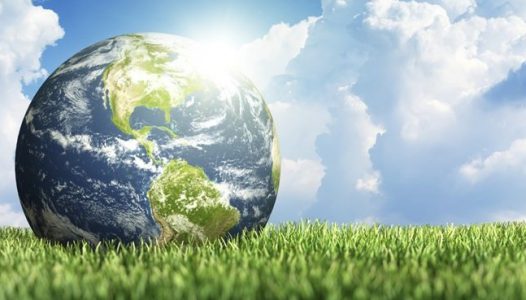The European Commission recently adopted the EU Action Plan: “Towards Zero Pollution for Air, Water and Soil” – a key deliverable of the European Green Deal and the main topic of this year’s EU Green Week. It sets out an integrated vision for 2050: a world where pollution is reduced to levels that are no longer harmful to human health and natural ecosystems, as well as the steps to get there. The plan ties together all relevant EU policies to tackle and prevent pollution, with a special emphasis on how to use digital solutions to tackle pollution. Reviews of relevant EU legislation are foreseen to identify remaining gaps in EU legislation and where better implementation is necessary to meet these legal obligations.
Executive Vice-President for the European Green Deal Frans Timmermans said: “The Green Deal aims to build a healthy planet for all. To provide a toxic-free environment for people and planet, we have to act now. This plan will guide our work to get there. New green technologies already here can help reduce pollution and offer new business opportunities. Europe’s efforts to build back a cleaner, fairer, and more sustainable economy must likewise contribute to achieving the zero pollution ambition.”
Commissioner for the Environment, Oceans and Fisheries Virginijus Sinkevičius said: “Environmental pollution negatively affects our health, especially the most vulnerable and socially deprived groups, and is also one of the main drivers of biodiversity loss. The case for the EU to lead the global fight against pollution is today stronger than ever. With the Zero Pollution Action Plan, we will create a healthy living environment for Europeans, contribute to a resilient recovery and boost transition to a clean, circular and climate neutral economy.”
To steer the EU towards the 2050 goal of a healthy planet for healthy people, the Action Plan sets key 2030 targets to reduce pollution at source, in comparison to the current situation. Namely:
- improving air quality to reduce the number of premature deaths caused by air pollution by 55%;
- improving water quality by reducing waste, plastic litter at sea (by 50%) and microplastics released into the environment (by 30%);
- improving soil quality by reducing nutrient losses and chemical pesticides’ use by 50%;
- reducing by 25% the EU ecosystems where air pollution threatens biodiversity;
- reducing the share of people chronically disturbed by transport noise by 30%, and
- significantly reducing waste generation and by 50% residual municipal waste.
The Plan outlines a number of flagship initiatives and actions, including:
- aligning the air quality standards more closely to the latest recommendations of the World Health Organisation,
- reviewing the standards for the quality of water, including in EU rivers and seas,
- reducing soil pollution and enhancing restoration,
- reviewing the majority of EU waste laws to adapt them to the clean and circular economy principles,
- fostering zero pollution from production and consumption,
- presenting a Scoreboard of EU regions’ green performance to promote zero pollution across regions,
- reduce health inequalities caused by the disproportionate share of harmful health impacts now borne by the most vulnerable,
- reducing the EU’s external pollution footprint by restricting the export of products and wastes that have harmful, toxic impacts in third countries,
- launching Living Labs for green digital solutions and smart zero pollution,
- consolidating the EU’s Knowledge Centres for Zero Pollution and bringing stakeholders together in the Zero Pollution Stakeholder Platform,
- stronger enforcement of zero pollution together with environmental and other authorities.
Jointly with the Chemicals Strategy for Sustainability adopted last year, the action plan translates the EU’s zero pollution ambition for a toxic-free environment into action. It goes hand in hand with the EU’s goals for climate neutrality, health, biodiversity and resource efficiency and builds on initiatives in the field of energy, industry, mobility, food, circular economy, and agriculture.
This year’s EU Green Week, the biggest annual event on environment policy, on 1 – 4 June will allow citizens across the EU to discuss zero pollution from its many angles at the main Brussels conference, online and in more than 600 partner events.
Background
Pollution is the largest environmental cause of multiple mental and physical diseases, and of premature deaths, especially among children, people with certain medical conditions and the elderly. People who live in more deprived areas often live close to contaminated sites, or in areas where there is a very high flow of traffic. A toxic-free environment is also crucial to protect our biodiversity and ecosystems, as pollution is one of the main reasons for the loss of biodiversity. It reduces the ability of ecosystems to provide services such as carbon sequestration and air and water decontamination.
According to a recent EEA report on Health and Environment, in the EU, every year over 400 000 premature deaths (including from cancers) are attributed to ambient air pollution, and 48 000 cases of ischaemic heart disease as well as 6.5 million cases of chronic sleep disturbance to noise, next to other diseases attributable to both.
The EU has already set many targets linked to pollution. Existing legislation on air, water, marine, and noise sets out objectives for environmental quality, and many laws address the sources of pollution. In addition, the Commission has announced some overarching targets for reducing nutrient losses and pesticides in the Farm to Fork and Biodiversity strategies to help achieve our biodiversity goals.
Source: European Commission






